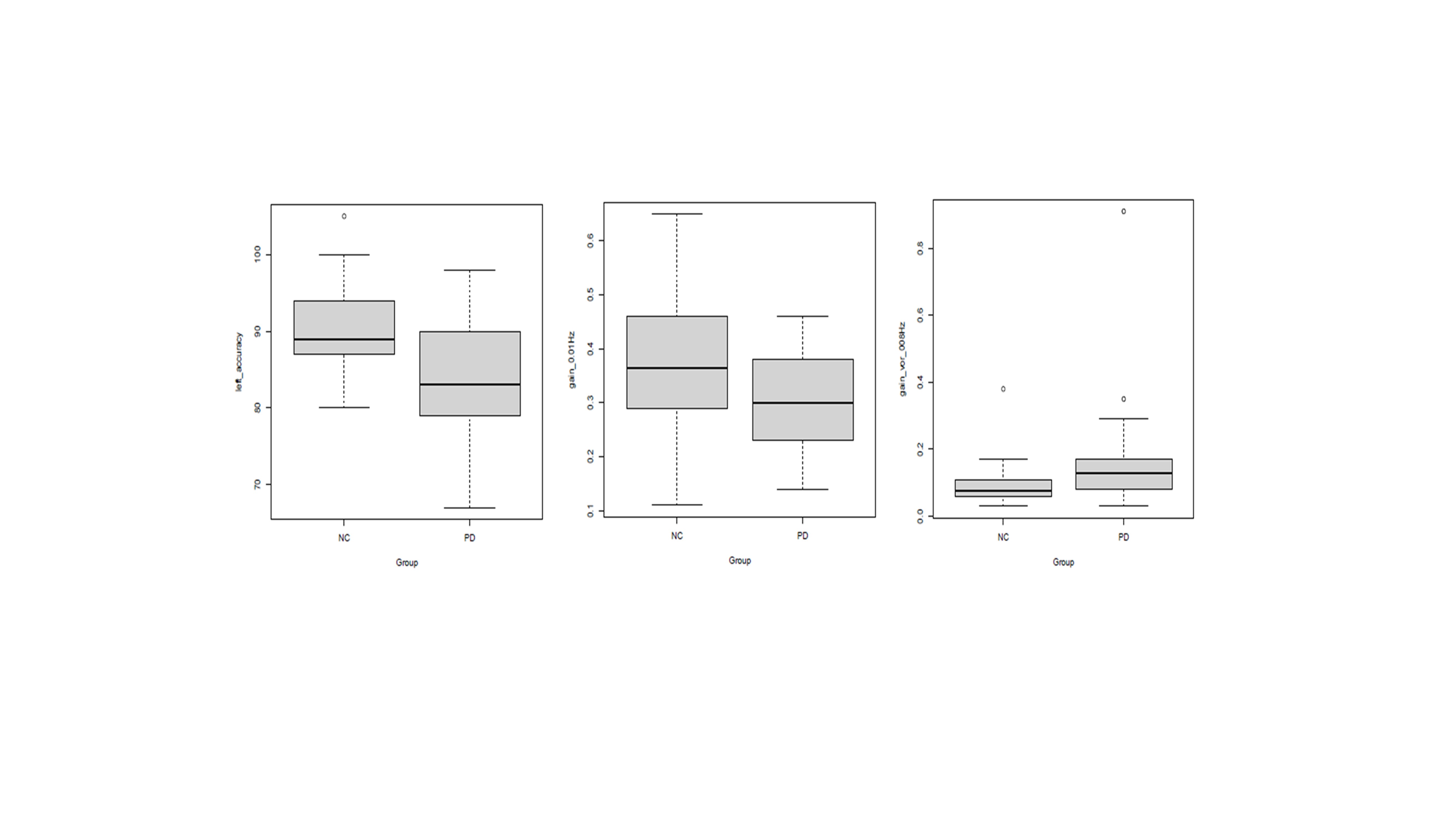Objective: We aim to investigate differences in specific vestibular tests between individuals diagnosed with Parkinson’s Disease (PD) and elderly healthy controls. With consideration for potential age-related presbyvestibulopathy (PVP), our primary objective is to pinpoint variables that demonstrate higher severity in PD.
Background: PvP is observed in neurologically intact aging adults and PD. While the vestibular system naturally experiences frequency-dependent decline with age, individuals with PD might show more pronounced dysfunction. The simultaneous occurrence of PD-specific vestibular changes alongside age-related alterations is not well understood.
Method: Forty-six participants diagnosed with PD (28 males, 18 females; age: 70.83±5.85) and 26 age-matched healthy controls (15 males, 11 females; age: 69.54±6.10) were recruited for this study. They underwent a clinical vestibular assessment: tympanometry, video head impulse test (vHIT), rotary chair testing, and bithermal water caloric irrigation. Diagnosis of PvP was made according to Barany Society criteria [1]. LASSO binary regression was employed for feature selection to distinguish PD from controls (PD vs. HC). Then, logistic regressions were performed (PD vs. HC), incorporating only the significant features and adjusting for age and sex.
Results: 17 PD (37%) and 7 controls (27%) were classified with PvP. LASSO regression analysis identified significant factors, including accuracy of eye movement (left side saccade), smooth pursuit at 0.4 Hz, VOR at 0.01 Hz, and increased VOR at 0.08 Hz during the suppression task, postural sway angles degree (eyes open), and velocity of postural sway (eyes closed). Logistic regression revealed that only left saccade accuracy of eye movement (O.R. = 0.872, p=0.020), reduced VOR gain at 0.01 Hz (O.R. = 0.000156, p=0.041), and increased VOR at 0.08 Hz during the suppression task (O.R. = 66200, p=0.049) were significantly different in PD compared to controls.
Conclusion: Patients with PD show evidence of more severe PVP abnormalities than their normal counterparts. Increased gain during the VOR suppression task at .08 Hz in patients with PD suggests central structures exert less effective control over the VOR. Reduced accuracy of slow and fast eye movements and VOR gain at 0.01 and increased VOR at 0.08 Hz during suppression task emerged as sensitive indicators for vestibular deficits in PD.
Figure 1
References: [1] Agrawal, Y., Van de Berg, R., Wuyts, F., Walther, L., Magnusson, M., Oh, E., Sharpe, M., Strupp, .M. (2019). Presbyvestibulopathy: Diagnostic criteria Consensus document of the classification committee of the Bárány Society. Journal of Vestibular Research, 29(4), 161-170
To cite this abstract in AMA style:
N. Bohnen, G. Carli, T. Brown, S. David, J. Barr, R. Vangel, T. Johnson, K. Kerber, D. Mccaslin. Age-associated presbyvestibulopathy is more severely abnormal in PD compared to the older controls [abstract]. Mov Disord. 2024; 39 (suppl 1). https://www.mdsabstracts.org/abstract/age-associated-presbyvestibulopathy-is-more-severely-abnormal-in-pd-compared-to-the-older-controls/. Accessed December 18, 2025.« Back to 2024 International Congress
MDS Abstracts - https://www.mdsabstracts.org/abstract/age-associated-presbyvestibulopathy-is-more-severely-abnormal-in-pd-compared-to-the-older-controls/

